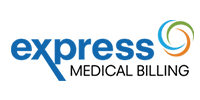There is strategy to making sure patient collections are as sufficient as possible. Here are some of the key components to increase patient billing while making sure your process is thorough and without neglect.
Obtaining Patient Information
The initial step to ensuring receipt of accurate patient collections owed to your practice is to make sure your patient demographics and insurance are complete and up to date at all times.
Your new patient forms need to request patient information such as name, date of birth, phone number(s) and address. There also needs to be a request for the social security number. This will greatly help when trying to find up to date insurance and/or address if either one were to become invalid. If a patient leaves this area empty, simply request that they fill in the blank and reassure them of your practice’s policy to abide by HIPAA regulations to secure their personal information. If they still refuse, as some will, it is okay. It is not worth making a patient feel uncomfortable. A copy of each patient’s driver’s license as well as a copy of the front and back of all insurance cards should be kept on file at all times. Always obtain a signed financial policy as well. This should explain your office’s policies and the patient’s responsibilities.
Addresses and insurances should be re-validated at each and every appointment for established patients no matter how redundant this may feel. This alone will save you countless hours of research down the road. If the patient answers yes right away, make sure you have read the address out loud so they are not solely assuming. As for insurance, do not simply ask, “Do you still have Anthem?” The turnover for new insurance plans and policies is at an all-time high. Verify their actual policy’s ID# each time. A change could be as simple as the patient’s prefix and could create months’ of delay in processing due to claim denials, research, claim re-submission, and so on.
Making sure your patients are eligible for every visit can be time-consuming and feel tedious to your office staff; however, this is critical to keep your claim turnaround as quick as possible and lessen the amount of time inaccurate information would take to further research later on. Portals are helpful in completing this task efficiently. Making sure your office staff is linked with all accessible insurance portals and navigating them with ease is advised. Most all commercial insurances have a portal for claim status, eligibility, and access to ERAs. Medicare and Medicaid each have their own sites to provide each of these services as well.
Time-of-service collections must also take priority within your office. When checking a patient’s eligibility prior to their appointment, office staff should also be in the habit of checking the patient’s prior balance owed and current benefits for copays and deductibles. By collecting these patient balances up front, time and money are saved.
Billing Accuracy
Claims need to be submitted to insurance on a daily basis and as quickly as possible from the date of service. If your office staff struggles with these daily charges, contemplate the benefits of a third party partnership. Having a third-party billing office to help ensure aspects of timely-filing, working claim rejections, resubmitting corrected claims and appeal submissions will then enable timely-statements to go out to your patients. Patients are less likely to pay a bill the longer the time gap is between when they were seen and when they were billed.
Patient statements should be run through an editing process to ensure accuracy. They should be submitted at the same time on a monthly basis. Regular, timely statements will increase the likelihood of obtaining timely payments in return.
There comes a time when some patients will become non-responsive to their bills. Every practice needs to have a policy set in place for outstanding balances. This policy should be informed to all patients at the time of service. A recommended process would be to send a maximum of 3 statements, the third statement being a collections warning. At that time, those balances would transfer over to your collections agency who can follow through with trying to obtain the payments owed.
Payment Options
Offering payment plans that work with the patient, prompt-pay discounts, and allowing multiple payment options all increase your chances of obtaining patient payments. Payment plans should be a set amount due each month until the balance is paid in full. Prompt-pay discounts would make patients think twice about paying the balance in full due to the enticing idea of saving money. Offering patients the opportunity to pay via credit card, cash, check, and HSA accounts will make paying a more convenient process for your patients.
Analyzing Your Patient Receivable
It is advisable to review your patient receivable regularly. Monthly reports summarizing patient balances displaying to your practice what is being generated initially, going out on patient statements, and coming back in return should be analyzed on a regular basis.

